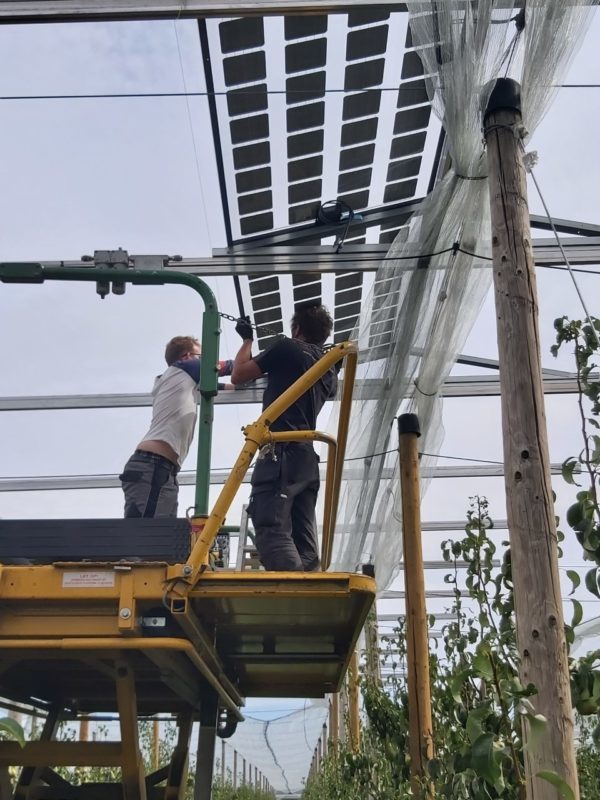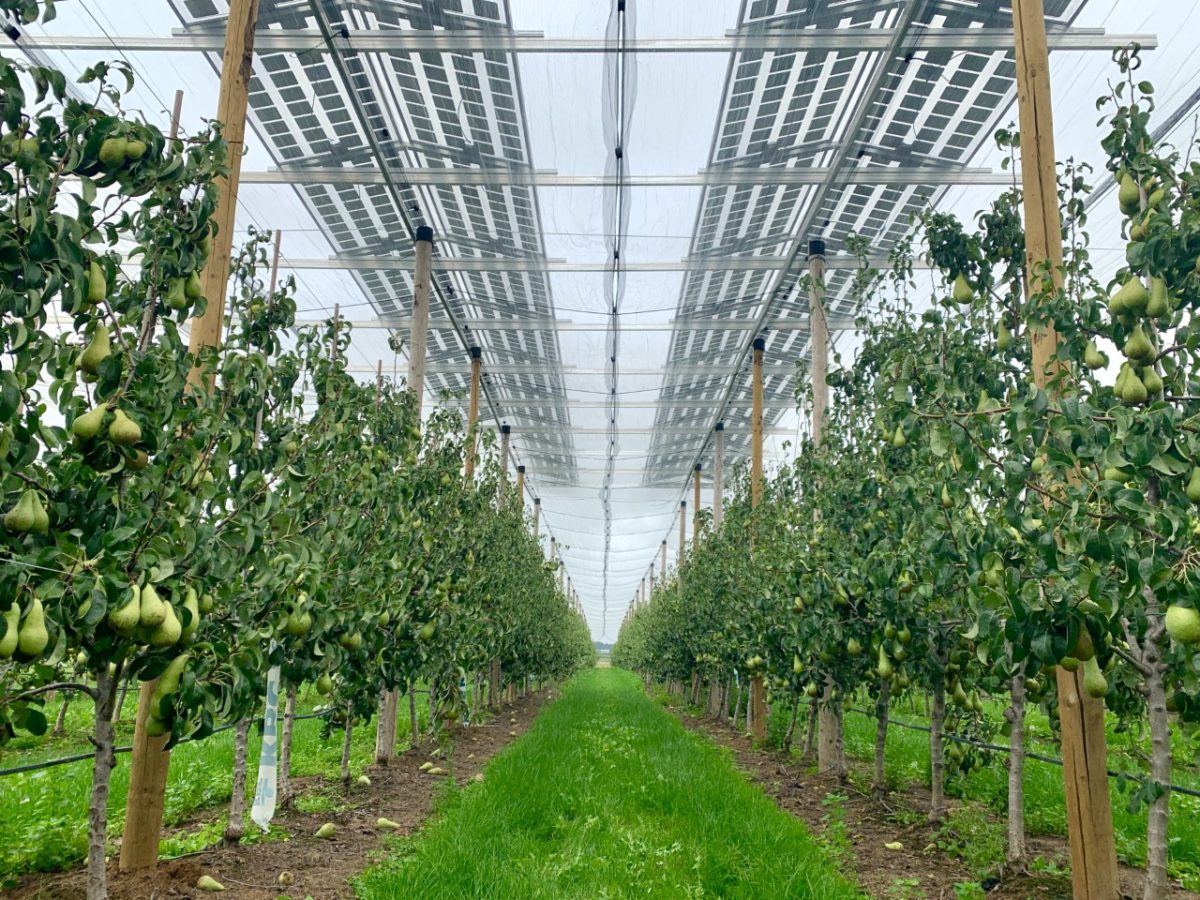From pv magazine International
A Belgium-based energy research team led by the KU Leuven has developed an agrivoltaic pilot project in Bierbeek, Flanders. They specifically designed the system for orchard crops.
The pilot plant is of the first outcome of a technology transfer project funded by the Flemish government and co-funded by 20 unspecified companies. It is designed to demonstrate the feasibility of agrivoltaics in Belgium. The project includes the planned installation of two more agrivoltaic set-ups with bifacial solar tracking and fixed stilted structures by March 2021.
“The installation is being tested in an orchard for pear trees,” researcher Brecht Willockx told pv magazine.
Pear trees are considered ideal for agrivoltaics, as they need protection from hail through the use of hail nets. “This is positive for the landscape pollution and social acceptance, as there is already a construction for protection that is being replaced by an active PV system,” Willockx said, noting that pear trees are permanent crops without yearly rotations.

Hail protection
“To optimally protect the pears against hail damage, we placed our PV modules on top of the trees in well-considered domes,” Willockx explained. “This has a nice side effect that during certain moment of the day, the shade is ‘falling’ between the tree rows, while at the same time they are protected against hail.”
The solar modules, which were specially designed by the research team, were placed at a height of 4.6 meters, based on the height of the agricultural machinery that is commonly used for pear trees. The selected modules feature transparent backsheets and conventional, equally spaced 156 x 156 mm silicon cells with 21% efficiency.
The choice of silicon cells was based on economic considerations and proven reliability, the researchers said. The selected modules are from Slovenian manufacturer Bisol’s Lumina series, at a price of €1/Wp. “However, it must be mentioned that for much larger systems and the use in agriPV applications the price would reduce drastically,” Willockx said.
Simulation tool
The research team, led by professor Jan Cappelle, also created a novel agrovoltaic simulation tool to calculate the energy production and tree light interception.
“With this tool, we could model the cell-configuration of the semi-transparent modules,” Willockx said. “Cell rows in parallel of the tree rows, results in a homogeneous light distribution and offer the best solution for a fixed system.”
Each of the modules has 36 cells divided into four rows of nine cells, which results in a transparency level of 40% and total module output of 185 W.
“There is always a tradeoff between the transparency level and the PV power,” Willockx said, noting that higher transparency levels will result in lower PV power density, and vice versa. “However, there is also a financial transparency limit: The needed PV power and energy returns must be calculated in function of the fixed structural costs to be financial attractive … This in combination with the needed transparency levels for the crop growth, explains the complex design of agriPV set ups.”
The system features three rows of modules, with a total output of 13.3 kW. This set-up, according to the researchers, is big enough to take the light boundary effects into account for research purposes.
“Our colleagues from KU Leuven bioscience engineering, led by Prof. Van de Poel, are monitoring the microclimate, including air temperature and humidity, leaf temperatures, and are further investigating the effect on the pear yields and the pear quality,” Willockx said.
The researchers plan to publish their results in the near future.
This content is protected by copyright and may not be reused. If you want to cooperate with us and would like to reuse some of our content, please contact: editors@pv-magazine.com.









By submitting this form you agree to pv magazine using your data for the purposes of publishing your comment.
Your personal data will only be disclosed or otherwise transmitted to third parties for the purposes of spam filtering or if this is necessary for technical maintenance of the website. Any other transfer to third parties will not take place unless this is justified on the basis of applicable data protection regulations or if pv magazine is legally obliged to do so.
You may revoke this consent at any time with effect for the future, in which case your personal data will be deleted immediately. Otherwise, your data will be deleted if pv magazine has processed your request or the purpose of data storage is fulfilled.
Further information on data privacy can be found in our Data Protection Policy.